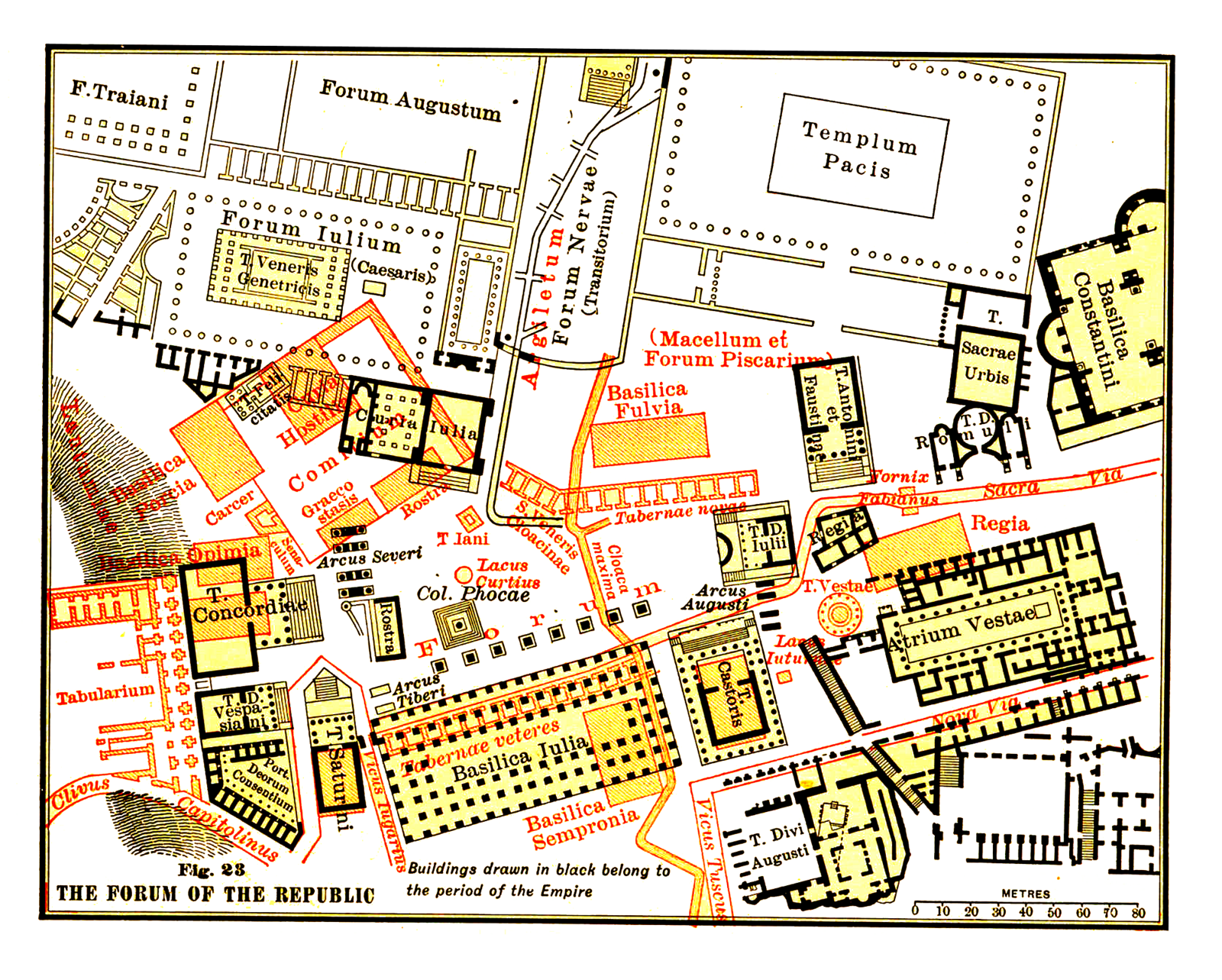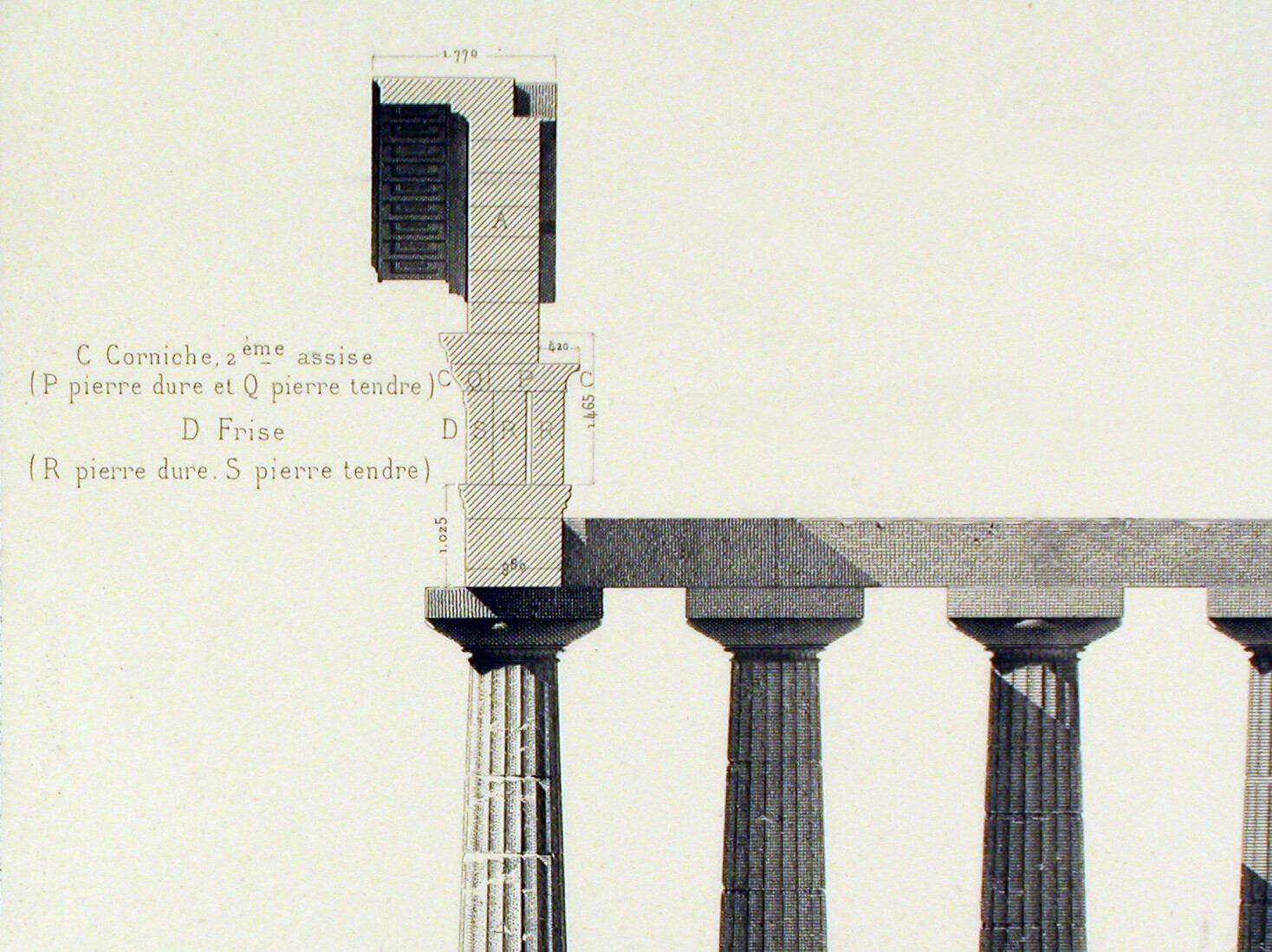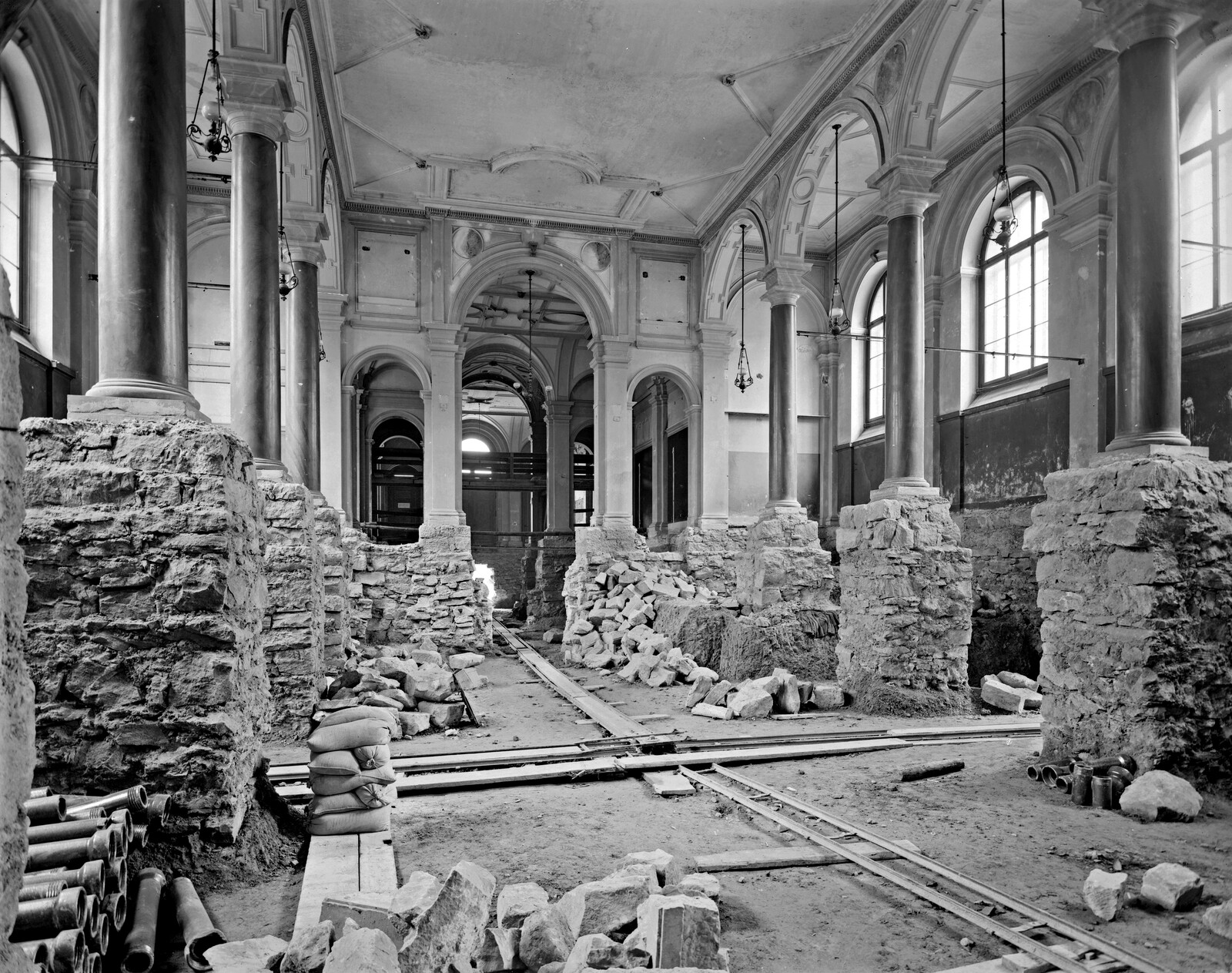(or, histories and theories of the prearchitectonic condition)
During discussions of “history/theory,” the term “architecture” often appears detached or simply dropped from this contested, yet by now well-established, academic partnership. It is as if “history/theory” were an autonomous entity and architecture a referent, which is no longer entirely necessary. But what is inherently historical and/or theoretical inside architecture? Is there a history and theory of architecture from within? And how would such a turn towards architecture’s interior articulation reformulate its main historiographic and theoretical categories including (but not limited to), space, form, structure, and organization?
Confronted by an ostensible “end of theory,” periodically invoked and perennially suspended, that has nevertheless triggered a renewed investigation into the origins of both the histories and theories of architecture, one might turn to a series of historical moments when both the history and theory of architecture appeared to start from scratch, the very beginning, or even before the beginning: a time when architecture did not apparently exist. But was there, or can there ever be a world with no architecture, meaning without any architecture at all? In other words, is there an arche—in terms of the Greek semasiology of the term connoting origin, beginning, as well as authority—that precedes the appearance of architectonics?
Paradoxically, such a prearchitectural state became a seminal subject of investigation by architects and architectural historians alike after the Second World War. Confronted with building collapse on an unprecedentedly massive scale as well as specters of modern architecture’s own ending, architectural historians like Sigfried Giedion, Nikolaus Pevsner, and Bruno Zevi attempted to reinterpret a number of prehistoric monuments, though only to corroborate theoretical principles that were already in use by modernist critics. At the same time, architects like Frederick Kiesler explored the earliest traces of human creativity in caves and reconfigured prehistoric stone and bone implements as the genealogical origins of modern design techniques.
While a desperate defense reaction against the threat of renewed collapse, such reengagement with prehistory was also an opportunity to rethink architecture from (or even under) the ground up by revisiting a world that could ostensibly sustain itself without it. Historiographically, and in spite of the copious (even if often haphazard) collection of evidence by paleoanthropological research, architectural history during this period appeared to regress onto the level of a theory or theoretical projection, or in other words, become a design whose historiographic parameters rehearsed a multiplicity of prehistoric tracings.
This modern architectural prehistory differed from earlier architectural theories narrating the origins of architecture, such as Laugier’s myth of “the primitive hut” or Semper’s story of “the four elements.” If these and other foundational stories from Vitruvius to Le Corbusier (analyzed in reverse order by Joseph Rykwert in On Adam’s House in Paradise) prescribed what architecture originally was and should essentially always remain, postwar theories of prearchitecture described what architecture was not, but could theoretically become should it regress into its prearchitectonic condition.
The strategy employed by Rykwert of reverse historical sequence is in fact symptomatic of a more theoretical reversal or circuitous disruption of chronology a propos the temporal position that prearchitectural histories and theories occupy: never exactly at or before the beginning, but more often after or before the end, which may or may not coincide with a current predicament. In the case of Giedion, for example, while his interest in prehistory bears earlier clues, his investigation appears to come into full speed in the late 1940s following the completion of Mechanization Takes Command (1948), an archaeology of “mechanized life” during the era of nineteenth-century industrialization. In the historian’s retrospective design, the nineteenth-century’s mechanical cabinet of curiosities served as the antechamber of twentieth-century modern architecture, whose evolution or development had already been covered in the architect’s Space, Time, and Architecture), and which, as is well known, begins with Brunelleschi’s invention of perspective. From the Renaissance back to the twentieth-century avant-gardes, and from nineteenth-century surreal furniture composites straight to the caves of Lascaux and Altamira, the historian’s trajectory aberrantly zigzags, while its original theoretical matrix remains that of an inverted linear perspective.
The undulating historiographic pathway would emulate Giedion’s geographic and/or physical trajectory when in-between teaching semesters at the ETH and, after 1954, Harvard, he would repeatedly travel to the caves of Spain and Southern France for onsite research and photographic documentation.1 Equally labyrinthine was Giedion’s exploration of the literature and confrontation with the methodological principles of paleoarchaeology and paleoanthropology, as evidenced by his extensive correspondence with some of these two fields’ most prominent representatives, including Abbé Lemozi, Abbé Breuil, and André Leroi-Gourhan in France, Hallam Mobius at Harvard, and Edmund Snow (Ted) Carpenter at Toronto.2 After the fruits of Giedion’s prehistoric travels were published in book form as The Beginnings of Art (1962), the first tome of the historian’s two-volume grand opus The Eternal Present, Leroi-Gourhan wrote a rather negative review of Giedion’s book in an anthropological journal.3 Following Gourhan, the most evident allure of Giedion’s book was also its greatest methodological weakness, namely the quasi- photographic treatment of prehistoric material—a type of viewing which could capture surface similarities but fails to penetrate into the inner discontinuities of each layer. “Abstraction,” “transparency,” “simultaneity,” and “movement” were the formal principles deciphered by Giedion on the rock tracings of the Aurignacian and Magdalenian periods, and then visually rhymed with the works of modern painters, such as Braque, Arp, and Klee. Giedion’s elaborate pseudomorphic arrangements produced the mirage of a reciprocal Gestaltung, one with the anti-perspectival clarity of a montage reminiscent of Moholy-Nagy’s advertising posters. The theory behind Giedion’s prehistory was the product of a graphic operation which, while based on regular geometric principles, produced irregular and even monstrous combinations.
While originally searching for links between the prehistoric cave sites in Southern Europe and proto-historic settlements recently excavated in the Near East, Giedion concluded that even if one could “interpret the fantastic forms occurring in these caverns as cathedrals, galleries, chapels, or what you will,” in the end these “sometimes sharply defined, sometimes utterly amorphous” sequences of forms “are not architecture.”4 The ostensible lack of concern for gravity and fixed spatial orientation that the modernist historian saw on cave tracings led him to argue that prehistoric caves were without tangible, architectonic space. In other words, prehistory could have no legible architecture, which properly starts with the discovery of the “vertical plane” in Egypt. This was perhaps the most canonical claim that could be made by a modernist architectural historian: architecture cannot emerge before history, and yet, history cannot properly begin without architecture.
But if prehistory had no architecture, it certainly had prearchitecture. Following Giedion, “prehistory is, in a sense, the prearchitectonic condition of human development.”5 Giedion’s differentiation between architecture and prearchitecture grants some form of legitimacy to prehistoric structures while at the same time excluding them from architecture proper. Indeed, while discounting caves from tangible architecture, Giedion conceded that prehistory has a “prearchitectural space conception.”6 Prearchitectural space is a fluid environment permeated by the archaic mentalities of animism and animatism, whose principles Giedion had studied in the texts of nineteenth-century comparative anthropologists such as Edward Tylor and James Frazer, as well as psychoanalysts like Freud and philosophical sociologists such as Lucien Levy-Bruhl. Here, this prearchitectonic animism describes the essential continuity between animate and inanimate bodies portrayed as “containers” of universal forces that surpass individual agency. Based on such an animist epistemological foundation, prearchitectural space lacks basic structural and tectonic properties, including the spatial distinction between the vertical and the horizontal, as well as the ontological division between man and animal, or even male and female. It is a space replete with hybrid zoomorphic figures as well as representations of what Giedion described as “bisexuality (Doppelgeschlechtigkeit).”7 Such an inclusively formed and composite state of existence was not the absolute negation of architecture but its indispensable prelude. While prehistory has no architecture, architecture has a prehistory, Giedion implies, and such architectural prehistory exists in prehistoric art. Cave drawings retrace the radical loss of civilized humanity that architecture should, for the historian, never embody but can remain “eternally present” within its ontological precedent under the rubric of art.
Yet prearchitecture is neither Giedion’s nor the twentieth century’s invention. One of the first uses of the term “prearchitectonic” comes even before the terms “prehistory” (préhistoire or Vorgeschichte) began to be widely used by archaeologists in Europe, and is in the writings of Gottfried Semper.8 Both in his Science, Industry and Art (1852) written while Semper was in political exile in London, as well as in his monumental Style (1860–1863), completed while the architect was teaching at the ETH in Zurich, Semper speaks of “prearchitectonic times” (vorarchitektonische Zeiten) preceding the great building civilizations. These prearchitectonic eras belong to a bygone time, when “building art (Baukunst) did not exist,” yet “luxury” produced an endless series of artifacts, “carpets, fabrics, tools, vases, and decorations.”9 In the first volume of Style, Semper also refers to the “prearchitectonic origin (vorarchitektonischer Ursprung)” of wall painting as well as the “prearchitectonic technique (vorarchitektonische Technik)” of the “wall-finisher” while describing the principle of cladding (Bekleidung).10 Prearchitectonic techniques describe not only a series of material processes, but also a tectonic arrangement of surfaces within an individual structure, such as a piece of textile or a decorated pot. In the second volume of Style, Semper would argue that ceramics “have influenced architecture indirectly” because certain forms and stylistic principles established in the ceramic art of “prearchitectonic times” would then “be taken up by architecture.”11 In other words, prearchitectonics is tectonics before architecture. Providing a series of identifiable spatial “motifs,” prearchitectonics presage built architectonics. For Semper, as later for Giedion, the “prearchitectonic” is not a limited temporal state but a structural condition that survives the invention of built architecture. Even after heavy masonry monuments would fully emerge, their prearchitectonic origins would be grafted on their surfaces as ornament or cladding, suggesting a layered form of continuity between prehistoric and protohistoric eras.
Interestingly, such a prearchitectonic state emerged during a period when the first world histories of architecture, as in James Fergusson’s 1855 Handbook of Architecture or Semper’s own theoretical systematizations of architectural techniques in Style, were first published, and by the very architects, theorists, and historians who composed these multi-volume histories and theories of architecture. It is as if the very establishment of architectural history and its theoretical underpinning also generated the seemingly ahistorical vision of an infinitely protractible era when architecture had not yet entered history but remained en attente, still waiting to coalesce into a discipline. Seen through these lenses, Semper’s analysis of objects in Style (whose long awaited third volume on architecture would never be published) as well as Giedion’s Mechanization Takes Command (essentially the Style of the twentieth century, analyzing the nineteenth century’s mechanized devices that Semper had not treated) and The Beginnings of Art are essentially preachitectural histories (or architectural prehistories) and therefore projective theories of architecture.
However, such broad correspondences between Giedion’s and Semper’s texts by no means imply a lack of historical differentiation. There are multiple layers within the continuing history of prearchitecture demarcating major geopolitical shifts between the mid-nineteenth century era when prehistoric archaeology was born and the mid-twentieth century when, following the discovery of Lascaux in 1940, prehistory was reborn as a psychological defense against the vision of humanity’s apocalyptic ending. Writing in 1945, the historian Max Raphael would comment that: “Today, mankind amidst enormous sacrifices and suffering is … striving for a future in the eyes of which all our history will sink to the level of ‘prehistory’ … [t]hus the art most distant from us becomes the nearest; the art most alien to us becomes the closest.”12
The study of prehistoric origins could uncover not only causes of modernity’s present crisis, but also signs of architecture’s “futures past.” By juxtaposing the fossils of prehistory with the “cosmic anxieties” of the postwar era as well as the prophesies of a posthistoire, Giedion ultimately would invent a pre/post/erous history, a fictional prehistory of future architectonics. One could then review the exclusion of architecture from the domain of prehistory as a point of departure for reconfiguring what both architecture and prehistory could reciprocally become. Prearchitecture is not “not architecture”; it is what architecture could have evolved into through a series of paradigmatic shifts, but ultimately disavowed. The same unfulfilled possibilities haunt not only the prehistoric past but also architecture’s present-day riddles, which constantly circle back to its aborted origins or endings.
Reto Geiser, “Erziehung zum Sehen” (particularly “Plastische Höhlenphotografie”) in Sigfried Giedion und die Photographie: Bildinszenierungen der Moderne, eds. Werner Oechslin and Gregor Harbusch, (Zurich: gta Verlag, 2010), 148–149.
For a more extensive account of Giedion’s correspondence with paleoarchaeologists, see Spyros Papapetros, “Modern Architecture and Prehistory: Retracing The Eternal Present (On Siegfried Giedion and André Leroi-Gourhan),” RES: Anthropology and Aesthetics 63/64 (Spring/Autumn 2013): 173–189.
André Leroi-Gourhan, review of The Eternal Present in American Anthropologist (New Series) 65:5 (1963), 1180–1181.
Sigfried Giedion, The Eternal Present: A Contribution on Constancy and Change, Vol. I: The Beginnings of Art, (Oxford: Oxford University Press, 1962), 526.
Ibid., 516.
Giedion uses the adjective “prearchitectural” instead of “prearchitectonic” to describe “prehistoric space conception” in his later book Architecture and the Phenomena of Transition (Cambridge: Harvard University Press, 1970), 2.
Giedion, The Beginnings of Art, 226–240.
Semper’s manuscripts today are stored next to Giedion’s typescripts in the gta archives housing the Nachlass of the 19th century architect as well as the 20th century architectural historian, both of whom lived and worked in Zurich.
Gottfried Semper, “Science, Industry and Art in the 1851 London Exhibition” in The Four Elements and Other Writings, trans. Harry F. Mallgrave and Wolfgang Herrmann (New York: Cambridge University Press, 1989), 143–144. For the German edition: Wissenschaft, Industrie, und Kunst (Braunschweig: Vieweg, 1852), 31–32.
Gottfried Semper, Style in the Technical and Tectonic Arts, trans. H.F. Mallgrave and M. Robinson (Los Angeles: The Getty Research Institute, 2004), 250. For the German edition: Der Stil. Bd. I: Die Textile Kunst (Frankfurt: Verlag für Kunst und Wissenschaft, 1860), 224 and 233.
Giedion, Style, 468 (translation modified) and Der Still. Bd. II. Keramik (Munich: Druckmann, 1863), 2.
Max Raphael, Prehistoric Cave Paintings, (Washington DC: Bollingen/Pantheon, 1946), 2.
History/Theory is a collaboration between the Institute for the History and Theory of Architecture (gta), ETH Zürich and e-flux Architecture.






















